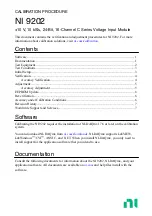
Copyright © 2005
– 2021 R. STAHL TRANBERG AS. All rights reserved. Page 24 of 38
Buttons and LEDs
Default state
As power is applied to the panel, the panel will be in the powered-up state. The
backlight will turn on and the buttons will turn on main or spare according to the last
known state (before power off).
On/standby
The panel will toggle on or off with a push on the button. To set the panel in standby,
press and hold the power button for approx. 1 second. In standby, the backlight will turn
off and the amber led inside the button will start to flash slowly. When the panel is
turned on, the backlight is turned on and the previous setting of lights will appear
automatically and instantly. The yellow led will turn off while the panel is turned on.
A fast flashing yellow led and an activated buzzer in the panel indicate a
communication error between the panel and the Master CPU.
Buttons
The buttons are positioned in rows and columns. Each column is typically 8 elements
high, where a button may be inserted in each element. A panel can have from 3 to 8
columns. Each button has two LEDs (green and red).
LEDs
There are two LEDs in each button, one red and one green. The three special keys
have different indicators: One amber in the power button, none in the Dim button, and
one red in the Alarm Silence button. Under the Special buttons there are 4 red LEDs
indicating errors in the power supplies.
Please see Chapter III Functional description, Section 3.02 Buttons and LEDs on panel,
Buttons and led status for an understanding of what the various led settings represents.
Led testing
By pressing the Alarm Silence button for more than 5 seconds, a n indicator test is
invoked: All red and green indicators will flash alternately twice per second. Press the
Alarm Silence button once more to exit this test state .
Backlight
The panel is equipped with a LED backlight to illuminate the text and graphics. The Dim
button regulates the light intensity. Press shortly to increase or decrease the backlight
in one step, press and hold to increase to maximum or decrease to minimum. The
direction of dimming (increase or decrease) changes for each key press.
Power supply monitoring
Up to four power sources may be connected to the Master CPU. These sources are
monitored by the Master CPU, and messages reporting the state for each supply are
continuously sent to the panel. The power s upply monitoring indicators will flash fast for
an unacknowledged alarm (even if the power supply has recovered), and light steady
when the alarm is acknowledged (if the supply net is still missing).















































